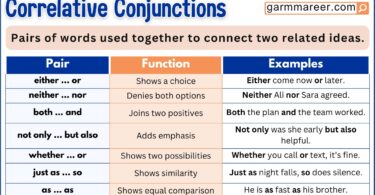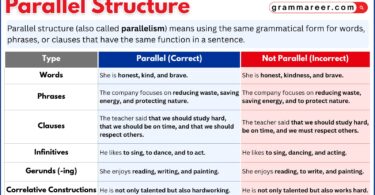Understanding the use of WHETHER and NO ONE is essential for building clear English sentences. These words help express choices and negative ideas correctly, which many learners find confusing. In this blog post, we will simplify their meanings in English and Urdu to make learning easier. Mastering such basic concepts strengthens your grammar foundation. To learn more essential rules, check out our grammar section.
Table of Contents
Use of WHETHER and NO ONE
Learning the correct use of WHETHER and NO ONE is essential for making natural and correct sentences in English and Urdu. Both words serve specific functions and are easy to master with examples. Let’s understand them clearly!
Use of WHETHER (خواہ، آیا کہ، چاہے)
Whether is used when talking about two possibilities, choices, or conditions. It gives a sense of uncertainty or choice between two options.
Structure:
Whether + Condition 1 + or + Condition 2
Translation in Urdu:
خواہ، آیا کہ، چاہے
Examples of WHETHER:
- Whether you come with me or not, I must go there.
(آپ میرے ساتھ آئیں یا نہ آئیں، میں وہاں ضرور جاؤں گا۔) - Whether you like it or not, but I do.
(آپ اسے پسند کریں یا نہ کریں لیکن مجھے یہ اچھی لگتی ہے۔) - Whether he is busy or not, he must come here.
(وہ مصروف ہے یا نہیں، وہ یہاں ضرور آئے گا۔) - Whether you are upset or not, we won’t spare him.
(آپ پریشان ہیں یا نہیں، ہم اُسے نہیں چھوڑیں گے۔) - Whether you like it or not, you have to get married to him.
(تم چاہو یا نہ چاہو، تمہیں اس سے شادی کرنی پڑے گی۔)
Use of NO ONE (کوئی بھی نہیں)
No one is used to express that “not a single person” is involved.
There is no difference between Nobody and No one in meaning.
Translation in Urdu:
کوئی بھی نہیں
Examples of NO ONE:
- No one can stop me.
(مجھے کوئی نہیں روک سکتا۔) - No one is serious.
(کوئی بھی شخص سنجیدہ نہیں ہے۔) - No one wants to talk to him.
(کوئی بھی شخص اس سے بات نہیں کرنا چاہتا۔) - No one bothered.
(کسی نے بھی پرواہ نہیں کی۔) - No one has reached yet.
(ابھی تک کوئی نہیں پہنچا۔)
Quick Tips for Readers
- Whether shows options or conditions.
- No one means nobody at all.
- Always follow “whether” with “or not” if needed.
- “No one” is used for emphasizing the absence of people.
You May Also Like



